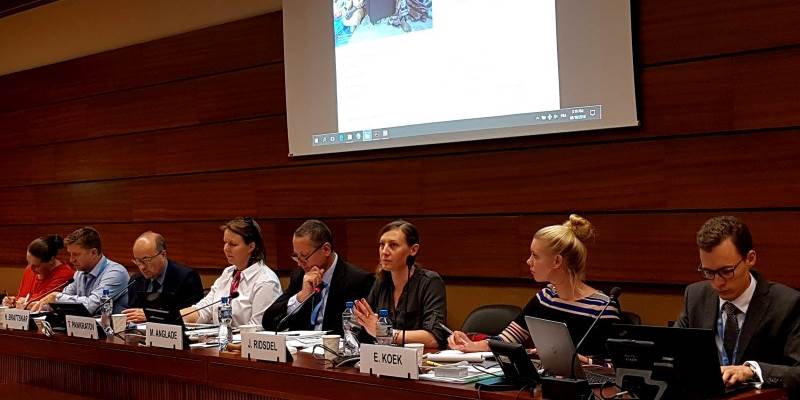Protection of children and young people is composed of a number of elements that need to work together and mutually reinforce each other. Earlier this year, the Permanent Mission of Norway organised a debate in which we asked representatives from five humanitarian organisations to address different elements of child protection. Their interventions reflected on the complexity of humanitarian situations and protection work, as well as advances made in the field of child protection and the way we need to work as we move forward.
Importance of Birth Registration
Birth registration prevents statelessness and secures access to health, education and other services provided by the state. Unfortunately, in an emergency context, such birth registration does not always take place, or documents are lost or may be issued by authorities that are not universally recognised. Ms Elisabeth Koek from the Norwegian Refugee Council (NRC) highlighted several examples of measures that can be taken to safeguard against statelessness and ensure birth registration, drawing on examples from NRCs work in Northern Iraq. Her recommendations included combining infant and child health checks with legal counselling and registration, allowing refugees to move more freely so they can access the right authorities, and replacing certificates from non-state actors with official ones.
Continued Services for Young People
Children and young people, as groups, have different and overlapping needs. Ms Janis Ridsdel from the UN High Commissioner for Refugees (UNHCR) highlighted in her intervention the importance of a continuum of services that addresses the needs of both children and young people. She also stressed the importance of facilitating the involvement of young people in this work.
Attending school mitigates the risk for recruitment to criminal or armed groups, it provides a safe place to learn and to be a child and it secures future work possibilities. However, as pointed out by Mr Michel Anglade from Save the Children, the situation for education in emergencies is difficult. In 2017, there were 12,000 attacks on education facilities that resulted in more than 20,000 persons killed or injured. Anglade pointed at the Safe Schools Declaration, now signed by 82 States, as a useful tool in protecting schools from attack. He highlighted Sudan as an example, where the declaration has been used as a reference when military doctrines have been revised.
Ms Alison Schafer from the World Health Organization (WHO) addressed the role of child friendly spaces. She took recent neuropsychological research as her point of departure, and explained how protracted stress and a lack of education and safe places to play can affect the development of a child’s and young person’s brain.
Children and Armed Groups
The increasing number of armed conflicts has also meant that more children are being recruited by armed groups. Michael Copland from UNICEF explained the importance of cross-sectorial efforts through livelihood interventions, education, peacebuilding and work on sexual and gender-based violence to help reintegrate these children and prevent them from being re-recruited.
During the discussion, the challenge of fragmented and short-term financing for protection was highlighted. In an increasingly demanding emergency environment, it is essential to get child protection right. Children and young people are the ones who will contribute to rebuild their societies, to peace-processes, reconciliation and to reconstruction.
Protecting children and young people in emergencies is a special priority in Norway’s humanitarian work. Read our recently launched humanitarian strategy here: https://www.regjeringen.no/globalassets/departementene/ud/dokumenter/hum/hum_strategy.pdf
